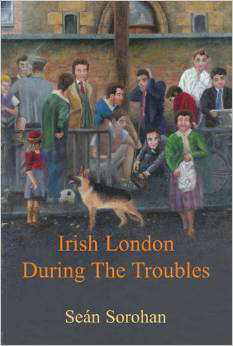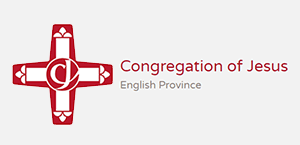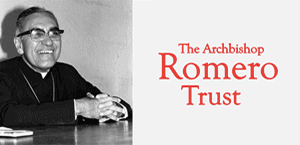Book: 'Irish London During the Troubles'

Irish London During the Troubles' Sean Sorohan, Irish Academic Press
This is a gem of a book which will appeal to anyone interested in the immigrant experience in general or The Troubles in particular.
Although focusing on the lives of Irish people living in London in the 1970s and 80s, the reader might wish to draw the obvious comparisons with how British Muslims are regarded, and how they see themselves, in an age of Islamist terrorism.
Sorohan interviews a cross section of Irish immigrants in depth, concluding that many retained strong social networks with other Irish thanks to church, the pub, going to dances and involvement in sporting activities. The higher the social class and education, the less the immigrants tended to congregate, however.
Remaining in touch with their Irish roots was easiest for men who had strong bonds through regular nights down the pub and sporting events. The downside was the high levels of alcoholism among Irish working class men in London. In the 1970s Irish men were eight times more likely to be admitted to psychiatric wards than their English counterparts. Irish men were also the only immigrants in the 1970s and 80s to experience a fall if life expectancy in the UK.
Interviewees, many of whom had little education, and thus worked on building sites, drank because of an "inferiority complex" and a "pent up anger". Their anger was not toward Ireland, that had failed to develop economically and offer its sons and daughters life chances, but against England. At the same time there was a realisation that "home" was no longer an option, despite much nostalgia. On trips home, people found a gulf between them and those they had left behind, especially in rural areas. In particular, interviewees did not wish to return to the nepotism and parochialism of Ireland at the time. Nevertheless, men remained more sentimental about Ireland, and were more likely to keep alive the notion that they might return home one day.
In contrast are the views of Irish women, many of whom who were relieved to escape Ireland's stifling atmosphere of moral judgement. Having settled into life in London, they did not want to return. Although the author doesn't mention it, they have this in common with female immigrants from countries where the status of women is low, and where few have the domestic appliances that transformed the lives of many Western women in the last century.
"The myth of return was something held more deeply by those who felt that they had to leave Ireland out of economic necessity, or a necessity to further their career due to lack of opportunity in Ireland; those who left Ireland for adventure or who abandoned a society they disliked were less likely to express any great sense of desire to return," writes Sorohan.
Given the highly charged atmosphere at the time, the author found among his interviewees low levels of political engagement or support for Irish nationalist papers, groups or demonstrations. The exceptions were marches to protest internment (1971) and the deaths of the IRA hunger strikers in the 1980s.
Some interviewees suggest there was a lack of political or organisational confidence among Irish immigrants because they were less educated and, being from rural areas, were unused to participating in civil society. The interviewees who were most involved happened to be the most educated.
Whatever support there was for the IRA's aims seems to have evaporated after the Birmingham and Guildford bombings of 1974. "In addition to genuine disgust at the actions of the IRA, there was a feeling of guilt by association or embarrassment," concludes Sorohan.
How did the English treat the Irish in their midst in the wake of the Birmingham and Guildford bombings? Happily, interviewees found English people understood only a minority of Irish supported violence. The Prevention of Terrorism Act did cause some hardship, making it easy for Irish people in the UK to be singled out by the police. Irish in London endured some frightening ordeals during detention, and there was some wariness of expressing opinions. In the wake of the Birmingham bombings the Irish Centre in London received threatening or abusive phone calls; two petrol bombs were thrown at Irish pubs and a shop, and the Irish embassy's windows were broken.
Yet, one of those involved in nationalist politics praised the British system for its fairness in allowing them to protest freely, commenting, "People hype this up a little too much that the Irish were running around scared. Try being a black kid growing up in Brixton. Come on, get over it." Moreover, English tolerance was compared to the atmosphere of intolerance back in Ireland at the time.
As someone who lived in Birmingham at the time of the bombings, this reviewer offers a different interpretation: the English were accepting of the Irish because they had more in common than separating them. To be sure, the Irish were badly treated in the 1950s, but by the late '60's the interviewees reported less racism.
Arguably, West Indian immigrants were exposed to more blatant racism in the 1970s and 80s, evident in the popularity of the National Front, and experienced by black people in a hundred ways each day. Perhaps West Indians were more obviously "other" than Irish immigrants. Yet, just like the Irish, over time the West Indians integrated and made huge contributions to British social, economic, cultural and sporting life. To put it bluntly, being Christian helped.
The new "others" are Pakistanis and Bangladeshis, many of whom are Muslim. The mutual suspicion, intolerance (and a resistance to integrate on the part of some in their community), makes their story all the more challenging at a time of "troubles" of a more global scale.















